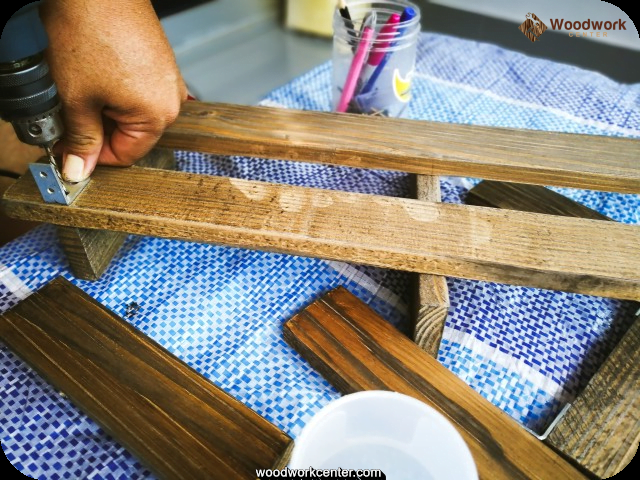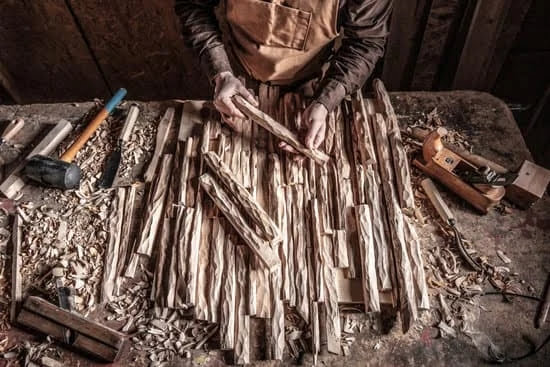Are you looking for ways on how to teach woodworking to children? Woodworking is not only a useful skill but also a great way to encourage creativity, problem-solving, and independence in kids. In this article, we will explore the importance of teaching woodworking to children and provide valuable tips for creating a safe and engaging woodworking environment for kids of all ages.
First and foremost, teaching woodworking to children can cultivate valuable skills that will benefit them throughout their lives. From learning to measure and cut accurately to understanding the principles of design and construction, woodworking provides a hands-on opportunity for children to apply math and engineering concepts in a practical setting.
Safety is paramount when it comes to teaching woodworking to children. We will discuss essential safety tips and guidelines for creating a safe environment for kids to learn and explore the art of woodworking. Additionally, we will delve into choosing appropriate projects for different age groups and introduce essential woodworking tools that are suitable for kids while ensuring their safety during use. Let’s get started on this exciting journey of introducing your child to the world of woodworking.
Safety First
Woodworking can be an incredibly rewarding and educational activity for children, teaching them valuable skills such as problem-solving, creativity, and independence. However, it is essential to prioritize safety when introducing kids to woodworking. Here are some important tips for ensuring a safe woodworking environment for children:
1. Adult supervision: Children should never be left unsupervised during woodworking activities. An adult should always be present to provide guidance, support, and ensure that safety protocols are being followed.
2. Safety gear: It is crucial for kids to wear appropriate safety gear, including goggles to protect their eyes from wood dust and flying debris, as well as gloves to safeguard their hands from sharp tools.
3. Proper tool usage: Teach children how to use woodworking tools safely and responsibly. Start with simple hand tools such as a hammer, screwdriver, and hand saw before progressing to power tools. Emphasize the importance of handling tools with care and attention.
4. Clear workspace: Keep the woodworking area free from clutter and distractions to minimize the risk of accidents. Show children how to organize their materials and tools in a way that promotes safety and efficiency.
5. Respect for materials: Teach children the importance of respecting the materials they are working with, including proper handling of sharp objects and understanding the potential hazards of different types of wood.
By following these safety tips, parents and educators can create a secure environment for teaching woodworking to children while helping them develop a love for this rewarding hobby that will last a lifetime.
Choosing Appropriate Woodworking Projects for Different Age Groups
When teaching woodworking to children, it is essential to choose appropriate projects that are suitable for their age and skill level. By selecting the right woodworking projects, you can ensure that children are engaged, challenged, and most importantly, safe. Here are some key considerations for choosing woodworking projects for different age groups.
For younger children, simple projects such as making a birdhouse, building a small shelf, or creating a picture frame can be great introductory woodworking activities. These projects allow young kids to practice measuring, cutting, and assembling with minimal risk of injury. It’s important to provide close supervision and guidance while allowing them to explore and develop new skills.
As children get older and more experienced with woodworking, they can take on more complex projects such as building a step stool, constructing a wooden toy, or even designing their own small furniture piece. These projects require increased precision and attention to detail, allowing older kids to further develop their woodworking skills while also testing their problem-solving abilities.
When introducing woodworking to teenagers, consider involving them in more advanced projects such as building a storage bench, constructing a simple table, or creating intricate wood carvings. At this stage, teenagers can also start learning about the finer details of woodworking such as different types of joinery techniques and advanced sanding and finishing methods.
It is crucial to remember that regardless of age group, safety should always be the top priority when teaching woodworking to children. Always supervise kids closely when using tools and equipment, and teach them the proper techniques for using each tool safely. By choosing appropriate woodworking projects for different age groups, you can ensure that children are learning valuable skills in a safe and engaging manner while fostering their love for woodworking.
Essential Woodworking Tools for Kids and How to Use Them Safely
Woodworking is a great hands-on activity for children, and it is important to equip them with the right tools to ensure their safety and success. When introducing kids to woodworking, it is essential to start with the basic tools that are appropriate for their age and skill level. Here are some essential woodworking tools for kids and how to use them safely.
Hand Saw
A hand saw is a fundamental tool that can be used by children with proper supervision. Teach kids how to hold the saw correctly and guide them in making simple cuts on soft wood. Emphasize the importance of keeping fingers away from the cutting path and using slow, steady movements.
Hammer
A lightweight hammer with a comfortable grip is suitable for kids to use when working on woodworking projects. Show them how to properly hold the hammer and strike nails into wood at a 90-degree angle. It is also crucial to teach children about the significance of wearing safety goggles while hammering to protect their eyes from flying debris.
Clamps
Clamps are essential for securing wood pieces together during gluing or assembly. Teach children how to use clamps effectively, making sure they understand how to adjust and tighten them securely without applying too much force.
Teaching woodworking techniques should always go hand in hand with emphasizing safety precautions and using tools safely. By providing children with the proper knowledge and guidance on using woodworking tools, they can develop practical skills, creativity, and problem-solving abilities through hands-on experience.
Teaching Woodworking Techniques
First and foremost, it is important to start with the basics. Introduce children to the different types of measurements such as inches, feet, and centimeters. Show them how to use a measuring tape or ruler accurately. Next, demonstrate the proper way to use a saw for cutting wood. Emphasize the importance of safety when handling sharp tools and teach kids the correct body posture and hand positioning while cutting.
When it comes to sanding, explain the purpose of this step in woodworking projects: smoothing the surface and preparing it for finishing. Show kids how to hold sandpaper properly and demonstrate the back-and-forth motion needed for effective sanding. Finally, introduce them to different finishing techniques such as painting or staining wood. Teach them about brush strokes or applying finish evenly for a polished look.
By incorporating these essential woodworking techniques into their skill set at an early age, children can gain confidence in their abilities while enjoying a fun and hands-on learning experience.
Overall, teaching woodworking techniques encourages problem-solving skills at an early age while fostering creativity. These skills are invaluable not just in woodworking but also in other areas of a child’s development. Incorporating these techniques into kids’ activities can have lasting benefits into adulthood.
Incorporating STEM Learning Into Woodworking Activities for Kids
Woodworking is more than just crafting wood, it also involves various STEM principles such as math, engineering, and technology. By combining woodworking with STEM learning, children can develop critical thinking skills, problem-solving abilities, and a deeper understanding of how things work. Here’s how to integrate STEM into woodworking activities for kids.
One way to incorporate STEM learning into woodworking is by having children measure and cut wood according to specific dimensions. This not only teaches them the importance of precision but also reinforces their math skills as they calculate measurements and angles. Additionally, introducing simple engineering concepts such as structural stability and load distribution when building wooden structures can help children grasp fundamental engineering principles in a hands-on manner.
Furthermore, technology comes into play when teaching kids how to use power tools safely. Explaining the mechanics behind these tools and discussing their functions can give children an appreciation for the technological aspect of woodworking. By combining traditional woodworking techniques with modern technology, children can gain a holistic understanding of the subject while developing practical skills that are invaluable in today’s digital age.
| STEM Principles | Woodworking Activities |
|---|---|
| Math | Measuring and cutting wood according to specific dimensions. |
| Engineering | Introducing structural stability and load distribution when building wooden structures. |
| Technology | Teaching kids how to use power tools safely while explaining their mechanics. |
By integrating STEM learning into woodworking activities for kids, parents and mentors can provide a well-rounded educational experience that expands beyond the boundaries of traditional schooling. This approach not only fosters a love for working with one’s hands but also instills valuable academic and practical skills in children that will serve them well in the future. Embracing the combination of STEM principles with woodworking creates an innovative learning environment where creativity, critical thinking, and technical know-how intersect.
Encouraging Creativity and Problem-Solving Through Woodworking Projects
Woodworking provides a wonderful opportunity for children to express their creativity and develop problem-solving skills. Through woodworking projects, kids can learn to think critically, visualize and plan, and execute their ideas into tangible objects. This section will explore the ways in which woodworking can encourage creativity and problem-solving in children.
One of the key ways to foster creativity in woodworking is by allowing children to have input into the design and execution of their projects. Allowing them to choose their own project or make modifications to existing designs helps them take ownership of their work and boosts their confidence in their creative abilities.
By encouraging kids to think outside the box and come up with unique solutions to design challenges, they begin to develop a strong sense of creativity that can carry over into other aspects of their lives.
Additionally, woodworking projects inherently present problem-solving opportunities for children. Whether it’s figuring out how to join pieces together securely or how to fix a mistake made during construction, woodworking teaches kids valuable lessons in patience, resilience, and adaptability.
As adults, we can guide children through these challenges by asking open-ended questions that prompt them to consider different approaches and weigh the pros and cons of each option. This not only helps build problem-solving skills but also fosters independence as they learn to tackle challenges on their own.
Finally, one way to further enhance creativity and problem-solving through woodworking is by incorporating elements of STEM learning into projects. For example, teaching kids about different wood types, understanding measurements for project dimensions, or exploring simple machines used in carpentry all provide valuable educational experiences that require critical thinking skills. By integrating these concepts into woodworking activities, kids gain a deeper understanding of the science behind the craft while honing both creative and problem-solving abilities.
Overall, teaching woodworking to children provides an excellent platform for promoting creativity and problem-solving in a hands-on manner. Through guidance and encouragement from mentors, kids can develop these essential skills that will serve them well throughout their lives.
Building Confidence and Independence in Children Through Woodworking
Teaching woodworking to children not only provides them with a valuable skill, but it also helps to build their confidence and independence. By allowing kids to work with real tools and create tangible projects, they can gain a sense of accomplishment and self-assurance that will carry over into other areas of their lives. Woodworking also encourages problem-solving and critical thinking, which helps children develop a sense of independence as they learn to tackle challenges on their own.
Developing Skills and Self-Reliance
Woodworking allows children to develop practical skills that they can use in everyday life. From learning how to measure and cut lumber accurately to mastering sanding and finishing techniques, kids can gain a sense of self-reliance as they become proficient in these essential woodworking skills. By teaching children how to use tools safely, they are empowered to work on projects independently, boosting their confidence in their abilities.
Setting and Achieving Goals
Working on woodworking projects provides children with the opportunity to set goals for themselves and work towards achieving them. Whether it’s building a birdhouse or crafting a simple stool, kids can take pride in completing these projects and see the direct results of their efforts. This process helps instill a sense of determination and resilience in children as they overcome challenges along the way.
Promoting Creativity and Decision-Making
Woodworking encourages creativity as children have the freedom to design and customize their projects. They learn to make decisions about how they want their creations to look and function, fostering a sense of ownership over their work.
This process allows them to explore different possibilities, make choices, troubleshoot problems, and ultimately take pride in what they have accomplished. Overall, woodworking is an excellent way for kids to develop confidence, independence, and problem-solving skills that will benefit them throughout their lives.
The Benefits of Teaching Woodworking to Children for Their Development
Teaching woodworking to children can have numerous benefits for their development. Not only does it provide them with practical skills, but it also helps to foster creativity, problem-solving abilities, and confidence. By introducing kids to the world of woodworking, they can learn valuable lessons that will serve them well throughout their lives.
Woodworking teaches children the importance of precision, patience, and attention to detail. These are critical skills that can be applied in various aspects of their lives, from academics to personal relationships. Additionally, woodworking allows children to explore their creative side by coming up with unique designs and solutions for their projects.
Incorporating STEM (Science, Technology, Engineering, and Mathematics) learning into woodworking activities can also offer numerous educational benefits. Children can learn about concepts such as measurements, angles, and forces through hands-on experience. This not only makes learning more engaging but also helps them develop a deeper understanding of these subjects.
Furthermore, woodworking encourages independence in children as they learn to work with tools and materials on their own. It also provides opportunities for them to make decisions and solve problems independently. This sense of control and accomplishment can greatly boost their self-esteem and confidence.
| Benefit | Description |
|---|---|
| Developing problem-solving skills | Woodworking activities require kids to think critically and come up with creative solutions. |
| Enhancing creativity | Children have the opportunity to design and create unique projects using their imagination. |
| Promoting independence | By allowing children to work with tools on their own, woodworking fosters a sense of control and accomplishment. |
Conclusion
In conclusion, teaching woodworking to children is not only a fun and engaging activity, but it also has numerous benefits for their development. By providing a safe and supervised environment for kids to learn woodworking, they can develop essential skills such as problem-solving, creativity, and independence. Additionally, introducing woodworking to children at a young age can foster a lifelong love for craftsmanship and DIY projects.
One key aspect of teaching woodworking to children is ensuring safety in the workshop. By providing proper guidance and supervision, kids can learn how to use essential woodworking tools safely and responsibly. This not only teaches them valuable skills but also instills a sense of confidence and independence as they take on more challenging projects.
Overall, teaching woodworking to children is about more than just the finished product; it’s about the process of learning, creating, and growing. By incorporating STEM learning into woodworking activities and encouraging creativity in project design, children can develop a well-rounded set of skills that will benefit them in various areas of their lives.
So whether it’s through measuring and cutting or sanding and finishing, teaching woodworking to children can be an incredibly rewarding experience for both the kids and the adults guiding them along the way.
Frequently Asked Questions
How Do You Introduce Kids to Woodworking?
Introducing kids to woodworking can be a fun and educational experience. It’s important to start with age-appropriate tools and projects, emphasizing safety first. Simple projects like birdhouses or picture frames can be a great way to start.
How to Learn Woodworking for Beginners?
For beginners learning woodworking, it’s important to start with the basics. This includes familiarizing oneself with different types of wood, tools, and techniques. Taking a class or finding online tutorials can provide valuable guidance for those just starting out.
What Are the Basic Steps of Woodworking?
The basic steps of woodworking involve planning, measuring, cutting, and assembling. It’s important to have a clear plan before starting any project, as well as using precise measurements to ensure accuracy. Cutting the wood properly is essential, followed by assembling the pieces together using appropriate techniques such as gluing or nailing.

Hi everyone! I’m a woodworker and blogger, and this is my woodworking blog. In my blog, I share tips and tricks for woodworkers of all skill levels, as well as project ideas that you can try yourself.





